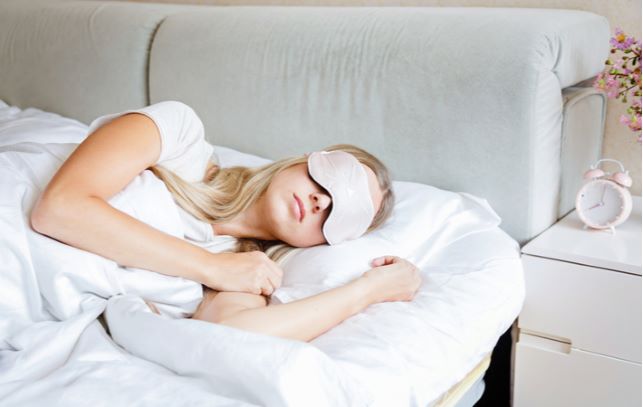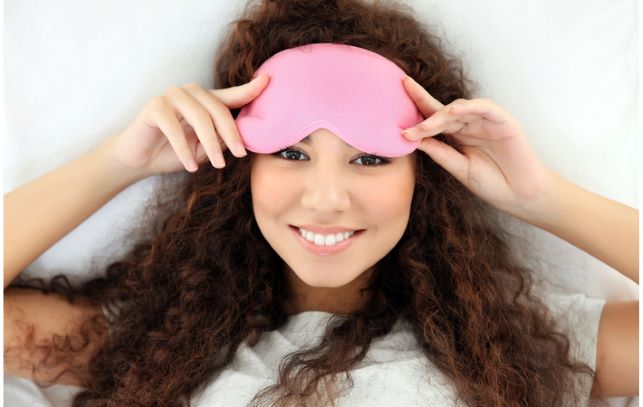Chances are you’ve experienced the irritation of dry eyes—after all, 90% of Albertans have reported feeling the symptoms. Burning eyes. Redness. Blurred vision. Dry eye disease can leave you with sore eyes and compromised vision.
Just because dry eye disease is common doesn’t mean it’s normal and doesn’t mean you have to put up with it. At River Heights Eye Care, we have a selection of remedies designed to ease your eyes.
One popular dry eye therapy? Masks. Read on to understand the ins and outs of dry eye disease and how masks can help bring you comfort.
The 4-1-1 on Dry Eye: What It Is, How It Feels, & How It Happens
Dry eye disease is caused by a lack of moisture and lubrication on your eyes. Normally these would be provided by your tears. However, if something has disrupted either the quantity or quality of the tears you produce, you’ll likely start to feeling dry eye symptoms.
Dry eyes can interfere with your day-to-day, wreaking havoc with frustrating symptoms such as:
- Pain
- Burning
- A gritty sensation as if something were in your eye
- Overly watery eyes
- Redness
- Blurred vision
Equally as frustrating is the fact that dry eye disease has so many different causes. Dry eye can be exacerbated by:
- Computer use
- Contact lenses
- Aging
- Environmental factors
- Smoking
- Laser eye surgery
- Health conditions
- Medications
- Allergies
Luckily, there are ways to address dry eye. Let’s look a little closer at the direct cause of most of these symptoms: interference with your tears.
Breaking Down Your Tears
Tears are an important part of how our eyes function. They coat our eyes to keep them moist and clean, and make blinking easy and smooth.
Did you know your body produces different types of tears that all have different compositions? There are 3 distinct types of tears:
- Emotional tears: What we commonly refer to as tears. Their name says it all—these are the tears we cry when we’re sad, angry, upset, or delighted. Scientists suggest that emotional tears have additional hormones & proteins not found in other tear types.
- Reflex tears: Your onion tears. Reflex tears are a reaction that protects our body from stimuli like chemicals, fumes, & the bug that flew into your eye while you were biking. They can also come hand-in-hand with eating spicy food, coughing too hard, or vomiting. Reflex tears clean & flush our eyes.
- Basal tears: Your everyday workhorse tears. They keep our eyes well lubricated & nourished, & are released in small quantities all the time.
Basal tears are often directly affected by dry eye disease. These complex tears can be broken down into 3 layers:
- The inner mucous layer that keeps your tears on your eye
- The watery middle layer that keeps your eye clean & moist
- The outer oily layer that stops evaporation & makes blinking smooth
The outer oily layer is produced in the meibomian glands. We feel the symptoms of dry eye disease when this layer gets disrupted, often due to a meibomian gland problem.
When Meibomian Glands Get Dysfunctional
Meibomian glands are small, oil-producing glands that line the very edge of the eyelid. Occasionally they can get plugged, often by a buildup of oil. This is called meibomian gland dysfunction.
Meibomian gland dysfunction is a major contributor to dry eye disease. If the oil being produced is poor quality, or there’s not enough of it, it leaves your eyes vulnerable to tear evaporation, dry patches, and irritation.

Find Relief In Masks
When you think of an eye mask, you probably imagine someone reclined on a cushion at a spa taking time to pamper themselves. But we have good news: masking your eyes may help address dry eye symptoms (even those classic cucumber slices may have mild hydrating benefits.)
So how do eye masks help ease the symptoms of dry eye disease? It depends on the type of mask. Wearing a warm mask over the eyes can help gently melt and loosen any solidified oil in the glands. This can lead to better tear production and reduce discomfort from dry eyes.
Cooling eye masks may help with dry eyes, too. This type of mask can ease discomfort associated with allergies and digital eye strain, both of which can contribute to dry eye symptoms.
Overnight or sleep masks may also help work against dry eye by protecting your eyes from the environment around you as you sleep.
Dry Eye Therapies from Your Trusted Neighbourhood Optometrist
You don’t have to take on dry eye disease on your own. If you’re suffering from eye irritation, come in to River Heights Eye Care. We offer masks, as well as other therapies for managing dry eye.


